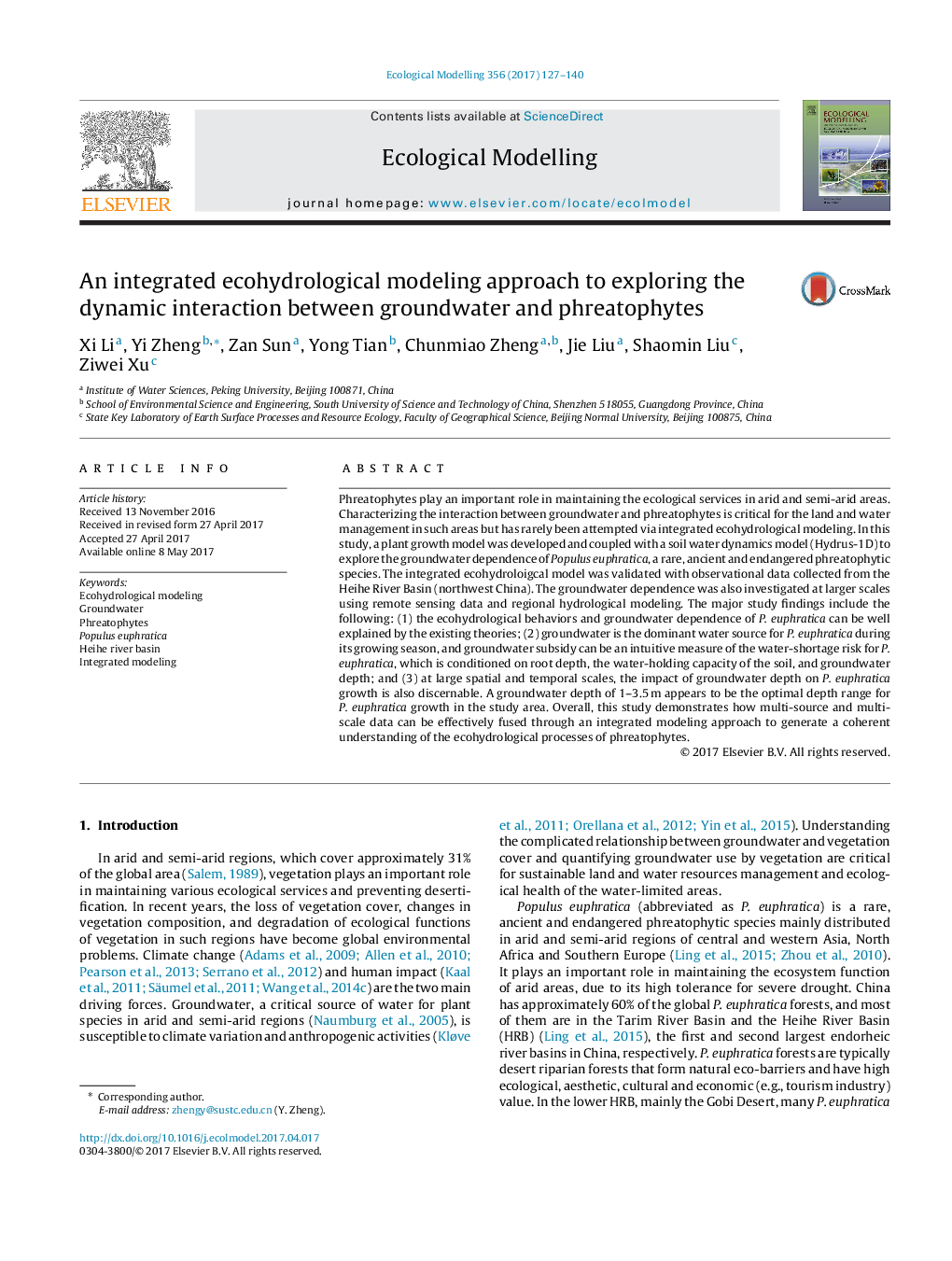| Article ID | Journal | Published Year | Pages | File Type |
|---|---|---|---|---|
| 5742208 | Ecological Modelling | 2017 | 14 Pages |
â¢Existing theories can well explain the ecohydrological behaviors of P. euphratica.â¢Groundwater is the dominant water source for P. euphratica in its growing season.â¢Multi-source and multi-scale data fusion was accomplished via integrated modeling.â¢Groundwater subsidy intuitively measures the water-shortage risk for phreatophytes.
Phreatophytes play an important role in maintaining the ecological services in arid and semi-arid areas. Characterizing the interaction between groundwater and phreatophytes is critical for the land and water management in such areas but has rarely been attempted via integrated ecohydrological modeling. In this study, a plant growth model was developed and coupled with a soil water dynamics model (Hydrus-1D) to explore the groundwater dependence of Populus euphratica, a rare, ancient and endangered phreatophytic species. The integrated ecohydroloigcal model was validated with observational data collected from the Heihe River Basin (northwest China). The groundwater dependence was also investigated at larger scales using remote sensing data and regional hydrological modeling. The major study findings include the following: (1) the ecohydrological behaviors and groundwater dependence of P. euphratica can be well explained by the existing theories; (2) groundwater is the dominant water source for P. euphratica during its growing season, and groundwater subsidy can be an intuitive measure of the water-shortage risk for P. euphratica, which is conditioned on root depth, the water-holding capacity of the soil, and groundwater depth; and (3) at large spatial and temporal scales, the impact of groundwater depth on P. euphratica growth is also discernable. A groundwater depth of 1-3.5Â m appears to be the optimal depth range for P. euphratica growth in the study area. Overall, this study demonstrates how multi-source and multi-scale data can be effectively fused through an integrated modeling approach to generate a coherent understanding of the ecohydrological processes of phreatophytes.
